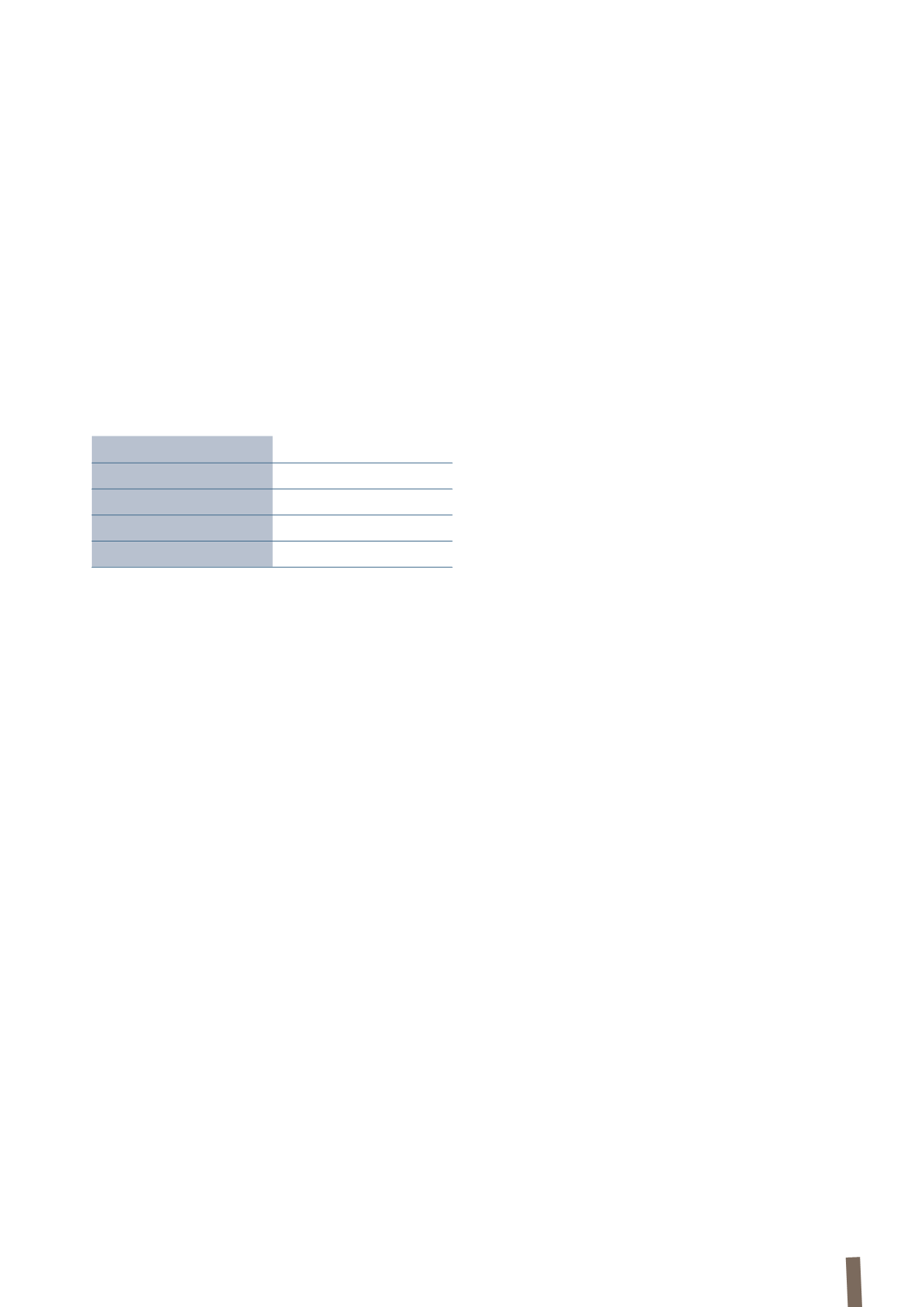
139
B.7 INTANGIBLE ASSETS
Intangible assets are non-monetary assets which are
separately identifiable, have no physical nature, are under the
company’s control and are able to generate future economic
benefits. Such assets are recognised at acquisition cost and/
or production cost, including all costs directly attributable
to make the assets available for use, net of accumulated
amortisation and impairment, if any. Borrowing costs directly
attributable to the acquisition or development of qualifying
assets are capitalised and amortised over the useful life of the
asset to which they refer. Amortisation commences when the
asset is available for use and is calculated on a straight-line
basis over the asset’s estimated useful life.
(a) Goodwill
Goodwill represents the difference between the cost incurred
for acquiring a controlling interest (in a business) and the fair
value of the assets and liabilities identified at the acquisition
date. Goodwill is not amortised, but is tested for impairment
at least annually to identify any impairment losses. This test is
carried out with reference to the cash-generating unit (“CGU”)
in profit or loss as incurred. When the replacement cost of
certain parts of an asset is capitalised, the residual value of
the parts replaced is expensed to profit or loss.
Depreciation is charged on a straight-line, monthly basis using
rates that allow assets to be depreciated until the end of their
useful lives. When assets consist of different identifiable
components, whose useful lives differ significantly from each
other, each component is depreciated separately under the
component approach.
The useful indicative lives estimated by the Group for the
various categories of property, plant and equipment are as
follows:
The residual values and useful lives of property, plant and
equipment are reviewed and adjusted, if appropriate, at least
at each financial year-end.
or group of CGUs to which goodwill is allocated. Reductions in
the value of goodwill are recognised if the recoverable amount
of goodwill is less than its carrying amount. Recoverable
amount is defined as the higher of the fair value of the CGU or
group of CGUs, less costs to sell, and the related value in use
(see Section B.8 Impairment of property, plant and equipment
and finite-life intangible assets for more details on how value
in use is calculated). An impairment loss recognised against
goodwill cannot be reversed in a subsequent period.
If an impairment loss identified by the impairment test is
higher than the value of goodwill allocated to that CGU or
group of CGUs, the residual difference is allocated to the
assets included in the CGU or group of CGUs in proportion to
their carrying amount.
Such allocation shall not reduce the carrying amount of an
asset below the highest of:
• its fair value, less costs to sell;
• its value in use, as defined above;
• zero.
Property, plant and equipment acquired through finance
leases, whereby the risks and rewards of the assets are
substantially transferred to the Group, are accounted for as
Group assets at their fair value or, if lower, at the present value
of the minimum lease payments, including any sum payable to
exercise a purchase option. The corresponding lease liability is
recorded under financial payables. The assets are depreciated
using the method and rates described earlier for “Property,
plant and equipment”, unless the term of the lease is less than
the useful life represented by such rates and ownership of
the leased asset is not reasonably certain to be transferred at
the lease’s natural expiry; in this case the depreciation period
will be represented by the term of the lease. Any capital gains
realised on the disposal of assets which are leased back under
finance leases are recorded under liabilities as deferred income
and released to the income statement over the term of the
lease. Leases where the lessor substantially retains all the
risks and rewards of ownership of the assets are treated as
operating leases. Payments made under operating leases are
charged to the income statement on a straight-line basis over
the term of the lease.
Non-current assets classified as held for sale are measured
at the lower of carrying amount and fair value less costs to
sell from the moment they qualify as held for sale under the
related accounting standard.
Not depreciated
25-50 years
10-15 years
10-20 years
3-10 years
Land
Buildings
Plant
Machinery
Equipment and other assets


